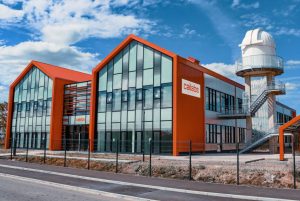Why switch to reflective technology to generate bessel beams?
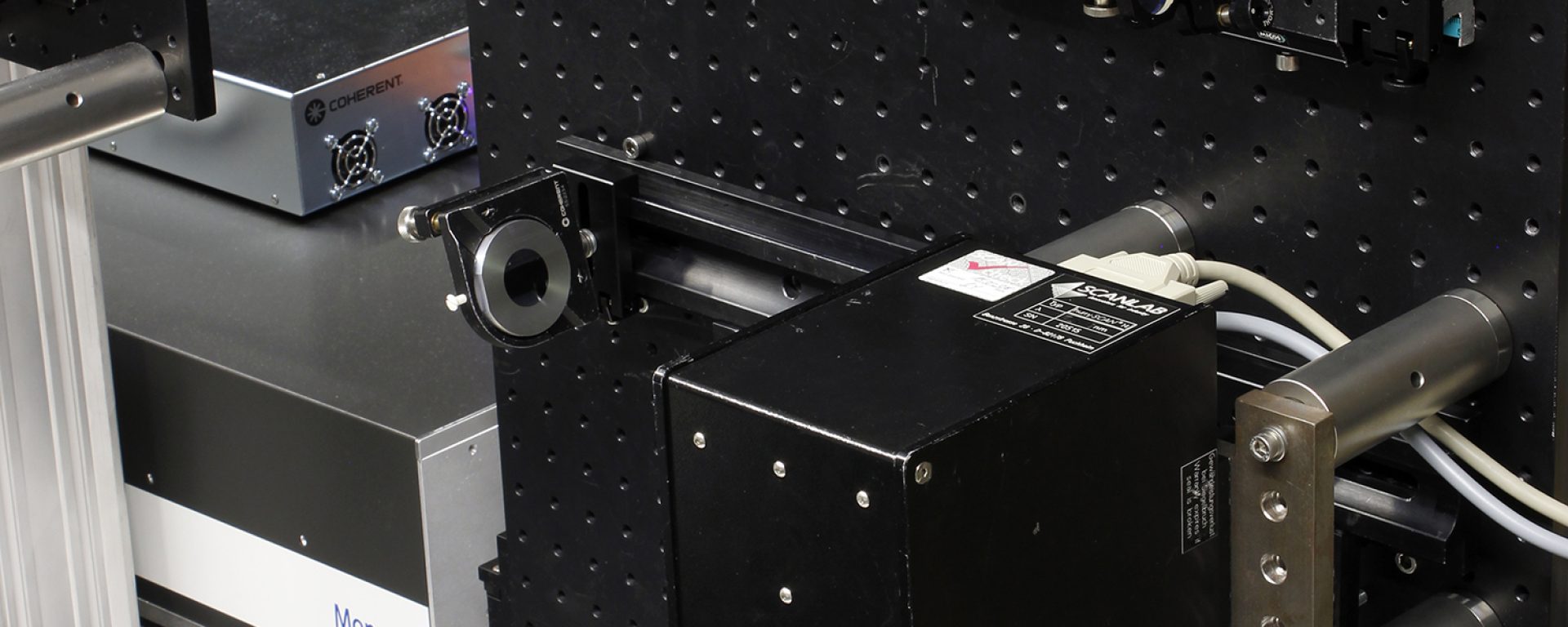
Glass cutting, especially for smartphone screens, requires high precision. Ultrashort laser machining using a Bessel beam allows quality improvement of machining, as well as their efficiency. It also allows complex cuttings such as multi-material. So how do you generate a Bessel beam? And why is reflective technology useful for this?
A Bessel beam is a beam formed by the constructive interference of laser light so that it generates a long, narrow, intense beam surrounded by concentric fringes of lesser intensity.

In addition to applications in imaging, biology and microscopy, Bessel beams are particularly useful for machining transparent materials using ultrashort laser beams. Their extended depth of field (greater than a Gaussian beam) and the small diameters that can be obtained allow them to achieve exceptional machining accuracy, for example when machining smartphone screens or substrates for electronics.
Various optical technologies can be used to generate Bessel beams. The most common are spatial light modulators (SLM) and axicons:
SLMs:
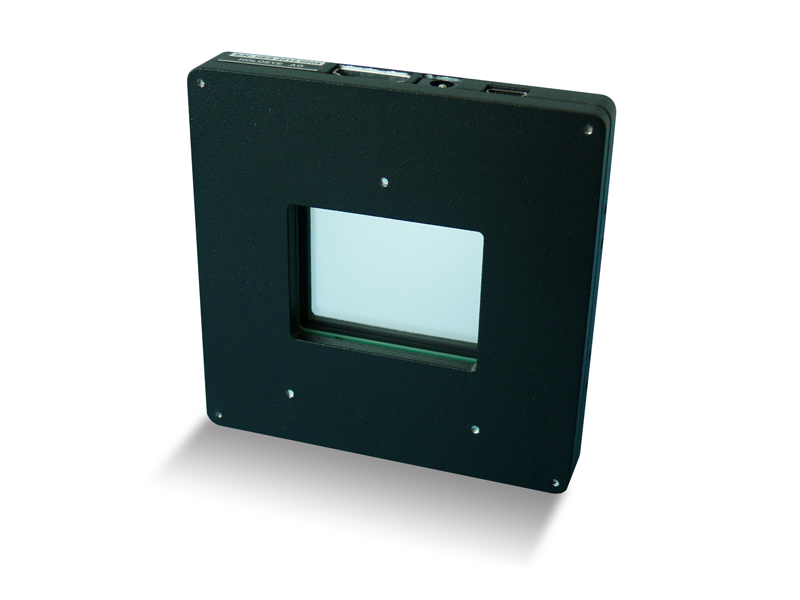
SLMs are devices that can dynamically modify the amplitude, phase or polarization of a laser beam using liquid crystals. Electronically controlled, they can generate a wide variety of beam shapes and are therefore very useful, especially for research.
However, they are generally very expensive, are sensitive to the disturbance of the input laser beams, and the quality of beam shaping is limited by the number of pixels it contains. Moreover, they are not capable of withstanding high power and high energy, which is incompatible with industrial use.
Axicons:
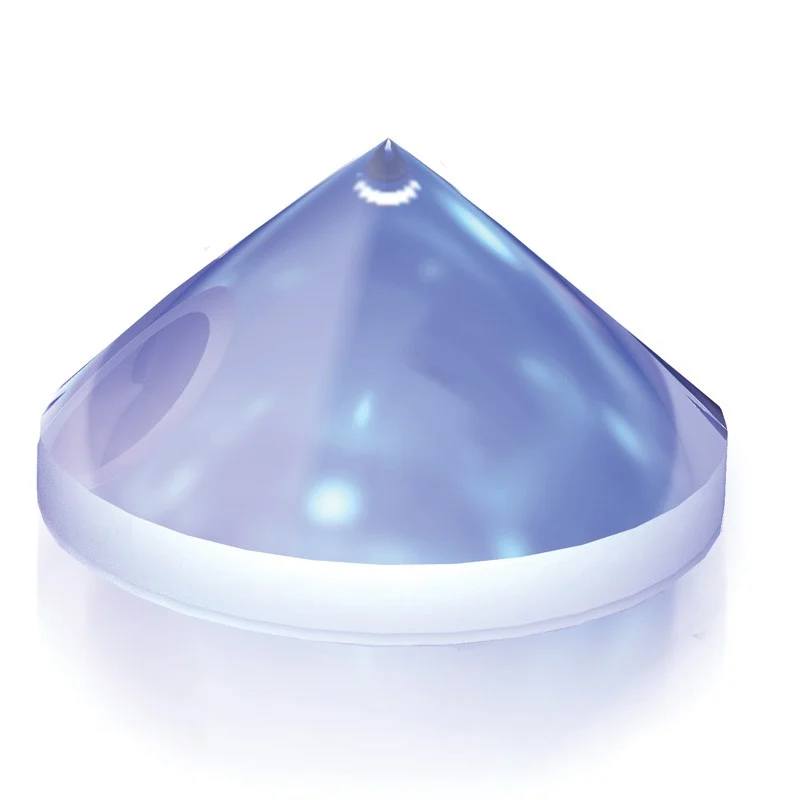
Axicons are conventionally transparent conical lenses. Available at reasonable prices, these components are widely used and are the most common method for generating Bessel beams, even at high power.
However, it is not possible to produce perfectly shaped transparent axicons: its tip is always curved, which inevitably causes interference defects and energy oscillations in the propagation direction of the generated Bessel beam. In turn, these defects lead to inaccuracies and non-uniform machining.
In addition, the transparent nature of these axicons subjects the ultrashort pulses (especially femtosecond pulses) to phenomena such as temporal dispersion and chromatic aberration, which degrade the beam quality. Transparent optics are therefore not suitable for femtosecond laser machining.
CANUNDA-AXICON:
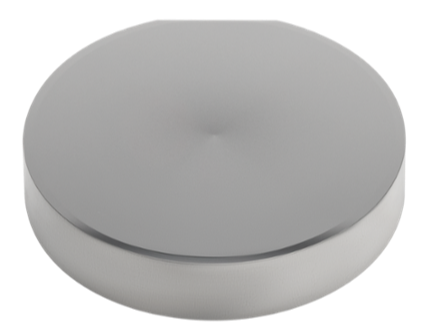
Cailabs has developed CANUNDA-AXICON, a range of fully reflective axicons. Reflective axicons function similarly to transparent axicons, but are manufactured to compensate for off-axis illumination. The manufacturing precision achieved to produce these axicons is higher than for conventional transparent axicons, making it possible to obtain exceptional quality, more homogeneous Bessel beams, perfect for precision machining.
Moreover, the reflective nature of these components allows them to withstand high energy and high power pulses and to avoid temporal dispersion and chromatic aberration. This makes them ideal for use with femtosecond lasers.
The robust nature of the CANUNDA-AXICON range means they can be used with a galvanometer scanner. This is a major step forward in the industrial use of Bessel beams for fast cutting of transparent materials.
The infographic below summarizes and compares all of these technologies.
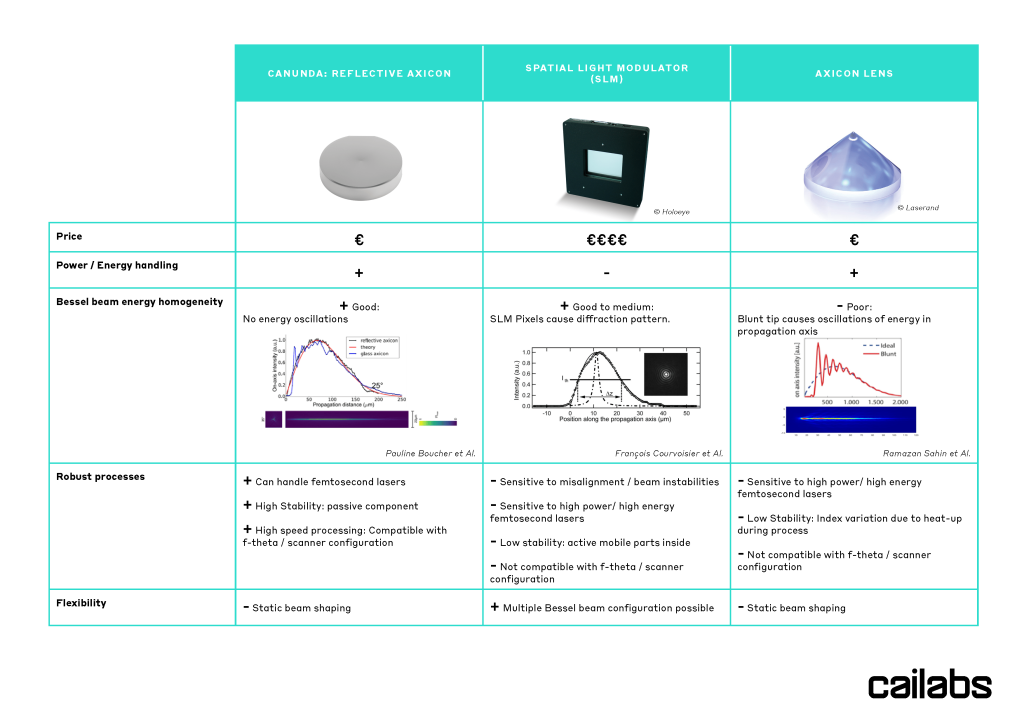

By Sami Laroui
Sami Laroui, who holds Master’s degrees in materials science and innovation and entrepreneurship, joined Cailabs in 2018. As a pre-sales engineer, he contributes to the development and commercialization of innovative optical solutions, that optimize the quality and performance of laser machining processes.
